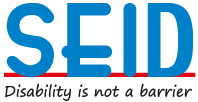SEID, under the project ‘Removing cultural barriers through education, therapy and vocational training for disadvantaged children with disabilities’ supported by HSBC 150th Community Fund, has organized an ‘Orientation and sensitization meeting with mainstream school teachers, SMC and community’ on 24th April, 2017 at Chhayanaut Auditorium, Dhanmondi, Dhaka. A total number of 100 participants including teachers of mainstream government and non government primary schools, teachers from specialized schools, school authority, community leaders, caregivers, children with disabilities enrolled in mainstream schools, government officials and development activists.
The objective of the orientation and sensitization meeting was to motivate, inspire and increase the responsiveness of the mainstream school teachers, parents and caregivers to facilitate the sustainability of the children with disabilities that enrolled in mainstream schools. The program has three sessions- the first one illustrated the background of the program with project outline, second session was on the disability concept and the third one was interactive session for the guests and the stakeholders i.e. government officers, mainstream school teachers and authority, caregivers, children with disabilities and community people.
The first two sessions were conducted by Md. Asif Bin Islam and A.K.M Badrul Huq, Program Coordinators from SEID whereas the interactive session was moderated by Mr. Ranjan Karmaker, Chairperson-SEID. Ms. Khaleda Begum, Thana Education Officer-Mohammadpur and Mr. K.M. Shahiduzzaman, Social Welfare Offier, UCD-6, Mohammadpur.
In the first session the context of the project supported by HSBC and the activities was shared with the participants to relate with the program objective.
The second session illustrated the disability concept, causes and prevention, government laws and obligations of the government primary schools regarding the enrollment of the children with disabilities.
The third session was an interactive one that encompasses the opinions, suggestions, problem identification, solving strategies and examples of drop outs as well as the successes. The three dimensional observations i.e. the mainstream school teachers, the children with disabilities and their caregivers and lastly the community and concerning government officials lead to the commitment towards creating an enabling environment for the mainstreamed children with disabilities in the schools.
